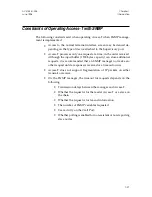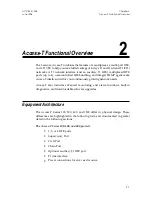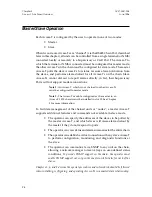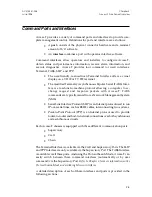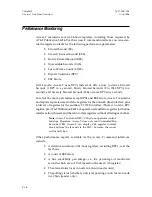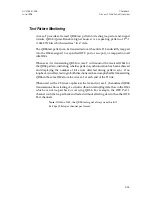
DTE Interfaces
Access-T provides up to four DTE ports for equipment operating at T1 subrates.
Each DTE port can be configured for the following parameters:
•
DTE interface:
V.35 or RS449.
•
Data rate:
Nx56 or Nx64 kbps, where N equals 1 to 24.
•
Data and clock signals:
Normal or inverted.
•
RTS:
Normally active or permanently asserted.
•
Terminal timing:
Prevents data loss due to phase shifts caused by
long DTE cables. As in normal timing, Access-T supplies both the
transmit clock and the receive clock to the DTE. However, when
Terminal Timing is enabled, Access-T clocks data in using the Exter-
nal Clock, as shown in Figure 2-3.
Each port employs a female DB25 connector supporting the EIA 530 standard.
Larscom offers adapter cables to convert to DC37 (RS449) or MS34 (V.35) connectors.
The pulse density required for T1 transmissions can be assured in several ways:
•
Transmitting data at a rate of Nx56. (The least significant bit will
always be a ONE.)
•
Using B8ZS line coding.
•
Inverting HDLC-formatted data.
•
Mapping data transmitted at a rate of Nx64 into alternate DS0s (with
idle code in the intervening DS0s).
•
Forcing bit 7 (the next-to-least-significant bit) to be a ONE in any DS0
with eight ZEROS. (The data rate must be Nx64.)
If the data from the DTE meets network pulse density requirements, the Nx64
DTE data rate may be used. This data rate provides clear channel operation—i.e.,
the full bandwidth is used for data—unless bit 7 stuffing is selected.
ACST-0351-005
Chapter 2
June 1996
Access-T Functional Overview
2-11




